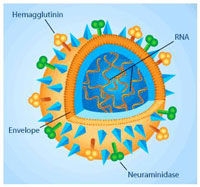Removing Prions from Blood using Pall Technology
Advertisement
Assessing the risk of potential exposure to variant Creutzfeldt-Jakob disease (vCJD) from blood transfusion was the focus of the food & Drug Administration (FDA) Transmissible Spongiform Encephalopathies (TSEs) Advisory Committee in silver Spring, Maryland. In response to the Committee's encouragement that new technologies should be considered that might lead to greater reduction of risk while not deferring many donors unnecessarily, Pall Corporation presented the latest scientific data on its new prion reduction technology. The Leukotrap® Affinity Prion Reduction Filter removes infectious prions from red cells, the most widely transfused blood component. Prions are associated with causing vCJD and other fatal neurodegenerative diseases, known as TSEs.
The unknown time interval between exposure to the infected prion and onset of symptoms exacerbates the challenge of determining the size of a second wave or epidemic. This asymptomatic characteristic poses the key question: How many dormant carriers of vCJD are out there who are at risk of developing clinical disease and who also may be blood donors?
There is currently a ban on blood donations from people who lived in countries with bovine spongiform encephalopathy (BSE) infected cattle, which can have an impact on availability and result in shortages of lifesaving blood components. A loss of one percent of donors involves approximately 75,000 to 85,000 individuals in the first year, not to mention their future potential donations. Leukocyte (white blood cell) reduction, which has been adopted by several nations to help decrease the risk of vCJD transfusion-transmission, removes only about 42 percent of TSE infectivity of blood.
The Pall Leukotrap Affinity Prion Reduction Filter was developed in response to these problems as part of the Company's mission to help ensure safety of the blood supply. It can remove leukocytes and all types of prions -- both cell and non cell-associated -- from blood prior to transfusion in a single step. Dr. Coker presented an overview of the key study results that show that the novel technology concurrently reduces leukocytes and prions with a 99 percent reduction of the infectious agent. He concluded that the new filter could be used to remove different strains of infectious prions, including those that cause vCJD.
Most read news
Organizations
Other news from the department science

Get the life science industry in your inbox
By submitting this form you agree that LUMITOS AG will send you the newsletter(s) selected above by email. Your data will not be passed on to third parties. Your data will be stored and processed in accordance with our data protection regulations. LUMITOS may contact you by email for the purpose of advertising or market and opinion surveys. You can revoke your consent at any time without giving reasons to LUMITOS AG, Ernst-Augustin-Str. 2, 12489 Berlin, Germany or by e-mail at revoke@lumitos.com with effect for the future. In addition, each email contains a link to unsubscribe from the corresponding newsletter.



























































